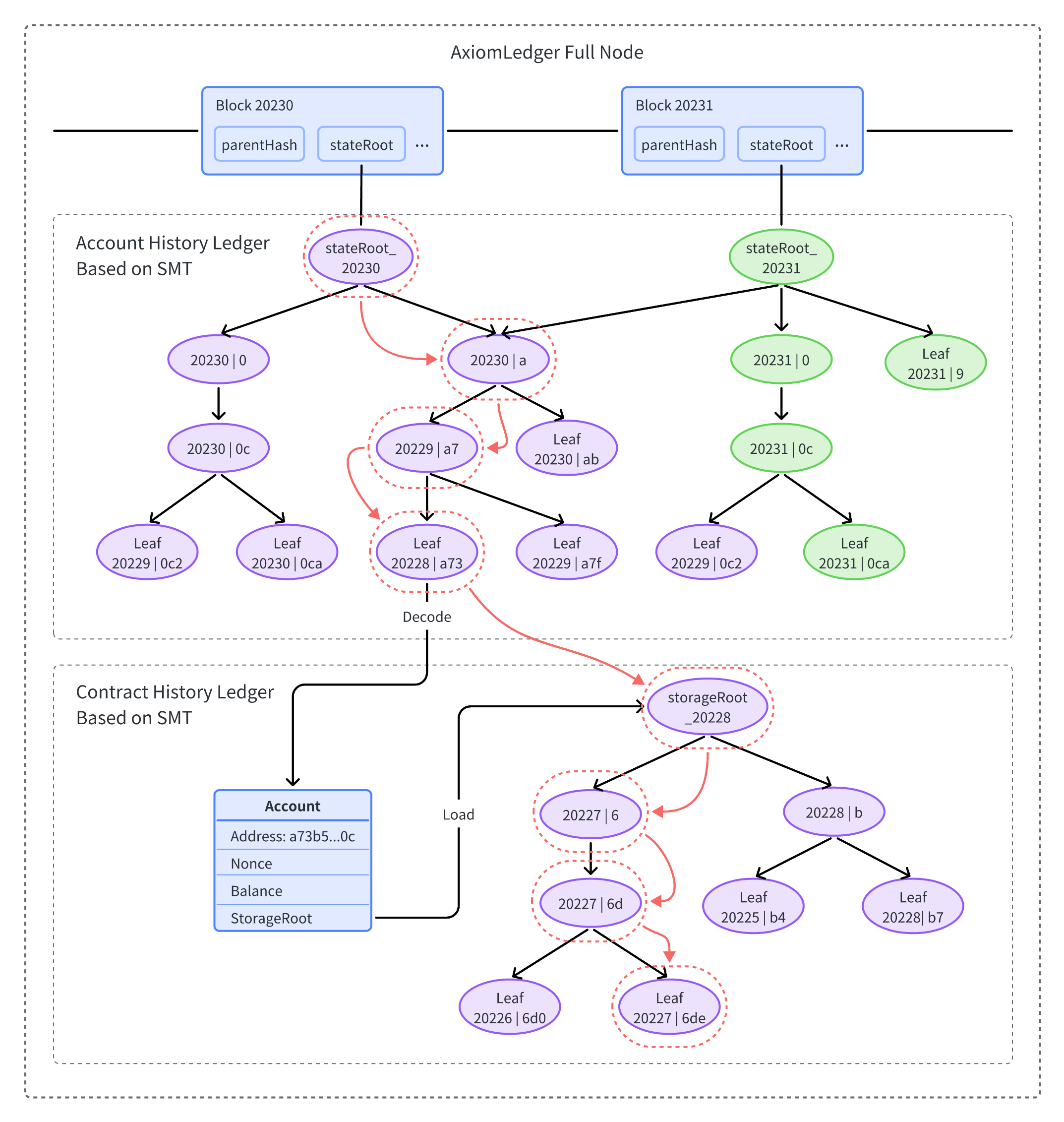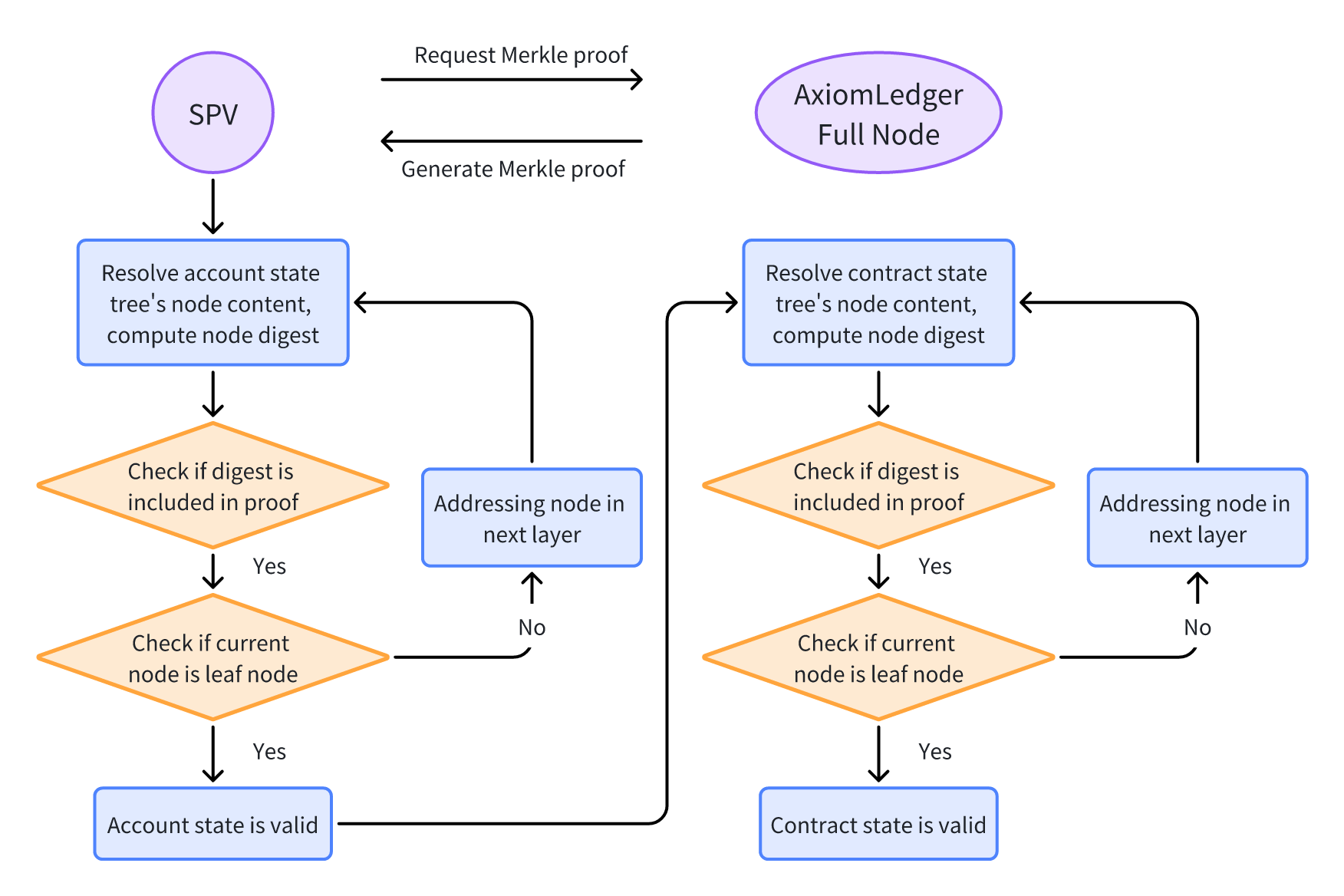Storage
This section will introduce the authenticated data structure and pruning scheme in ledger components, as well as the verification process of SPV nodes.
SMT
The ledger component uses Sparse Merkle Tree (SMT) as an authenticated data structure. SMT is an optimized Merkle tree, which reduces the number of nodes in the tree by recursively merging single-leaf subtrees, thereby speeding up addressing and reducing waste of storage space.
At the same time, we construct the key of the SMT node based on the block number. When using the KV storage engine based on the LSM tree, this scheme can significantly reduce the compression overhead of the storage engine.
SMT is used as the default implementation of account state tree and contract state tree in AxiomLedger. The account state tree records the state of all accounts under the current block, and its root hash is included in the block header of each block. The contract state tree records the value of the contract state variables, and its root hash is included in the account entity.
The following figure shows the history ledger architecture of AxiomLedger:

Pruning Scheme
Pruning scheme can prune the blockchain ledger history, reduce the amount of disk space that running a node requires, and improve the read and write performance of ledger.
AxiomLedger supports pruning scheme, in which the prunner will prune the ledger history that out of pruning window in node runtime.
By configuring different pruning window, an AxiomLedger node could be an archival node (which maintains the ledger history of all blocks), or a full node (which only maintains the ledger history of several recent blocks).
KV Storage Engine
AxiomLedger uses Pebble as the default KV storage engine. Pebble is a new generation of high-performance KV storage engine, which has better read and write performance than LevelDB and RocksDB. AxiomLedger also supports configuring LevelDB as KV storage engine.
SPV
The AxiomLedger supports SPV (Simplified Payment Verification). Lightweight clients (such as wallets) can request Merkle proof from AxiomLedger full nodes through the SPV protocol without maintaining a complete blockchain ledger, and use this Merkle proof to verify the correctness of the account state and contract state. The main steps of SPV are as follows:
- The client downloads block headers from a trusted data source.
- The client requests the Merkle proof from full nodes.
- The client verifies the Merkle path of the account state tree.
- The account state passed the verification.
- The client verifies the Merkle path of the contract state tree.
- The contract state passed the verification.
The following figure shows the main steps of SPV:
